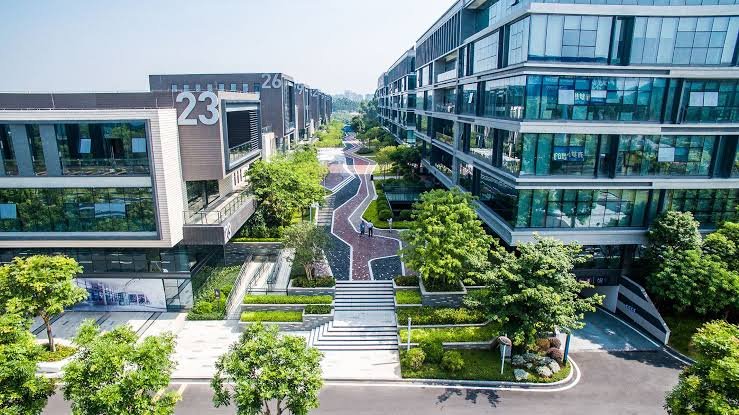Introduction
Business parks have played a pivotal role in reshaping the landscape of modern commerce. Over the years they have transformed from mere industrial zones to dynamic ecosystems that foster innovation collaboration and economic growth. This article explores the evolution of business parks their impact on local economies and the factors that make them a crucial component of contemporary business strategy.
I. The Genesis of Business Parks
The concept of business parks dates back to the mid 20th century when urban planners and developers sought to create organized efficient and specialized areas for commercial and industrial activities. The primary goal was to centralize business operations reduce congestion in city centers and provide companies with an environment conducive to productivity.
Early business parks were primarily characterized by a collection of office buildings and industrial warehouses situated in close proximity to one another. These parks aimed to offer businesses a range of amenities such as ample parking, green spaces and easy access to transportation routes. This allowed companies to establish a presence outside of crowded urban cores while enjoying the benefits of a well organized business focused environment.
II. The Evolution of Business Parks
As the global economy evolved so did the concept of business parks Today business parks have undergone significant transformations to meet the diverse needs of modern enterprises Here are some key elements of their evolution
1. Technological Advancements: Business parks have embraced cutting-edge technology providing state of the art infrastructure to accommodate advanced manufacturing research and development and high tech industries.
2. Mixed Use Spaces Many contemporary business parks integrate mixed-use spaces combining office spaces research facilities residential areas and retail spaces. This mix encourages collaboration supports work-life balance and reduces commuting.
3. Sustainability Initiatives With growing environmental concerns business parks are increasingly incorporating eco friendly practices such as green building design renewable energy sources and efficient waste management.
4. Amenities and Services Modern business parks prioritize the well being of their occupants offering a wide range of amenities and services including fitness centers childcare facilities dining options and recreational areas.
III. The Impact on Local Economies
Business parks have a profound impact on the local economies in which they are situated Here are some ways in which they contribute to economic growth
1. Job Creation Business parks generate employment opportunities attracting both skilled and unskilled workers. The diversity of industries within business parks fosters a broad range of job profiles.
2. Increased Property Values Surrounding property values tend to increase as business parks attract more businesses and residents leading to improved infrastructure and services.
3. Infrastructure Development To accommodate business parks local governments often invest in transportation networks utilities and public services which benefits the entire community.
4. Innovation Hubs Business parks often serve as innovation hubs where research and development activities flourish leading to advancements in technology and industry.
5. Tax Revenue The presence of thriving businesses in business parks contributes to local tax revenue enabling municipalities to fund essential services and infrastructure projects.
IV. Factors Contributing to Success
Several factors contribute to the success and attractiveness of business parks
1. Location Accessibility proximity to key markets and transportation infrastructure are essential considerations for businesses choosing a location within a business park.
2. Connectivity High speed internet and robust digital connectivity are crucial for modern businesses allowing them to operate efficiently and compete globally.
3. Flexibility Business parks that offer flexible leasing arrangements and the ability to scale up or down with ease are more appealing to a variety of enterprises.
4. Collaboration Opportunities Encouraging collaboration through shared spaces networking events and industry specific clusters can enhance the appeal of a business park.
5. Sustainability Sustainability initiatives and green practices not only reduce operating costs but also align with the values of many modern businesses.
Conclusion
Business parks have come a long way since their inception evolving into dynamic ecosystems that drive economic growth and innovation. As the global business landscape continues to evolve these hubs will remain crucial in providing companies with the resources and environment they need to thrive. With their ability to foster job creation support local economies and encourage innovation business parks are poised to remain a vital component of contemporary business strategy for years to come.

